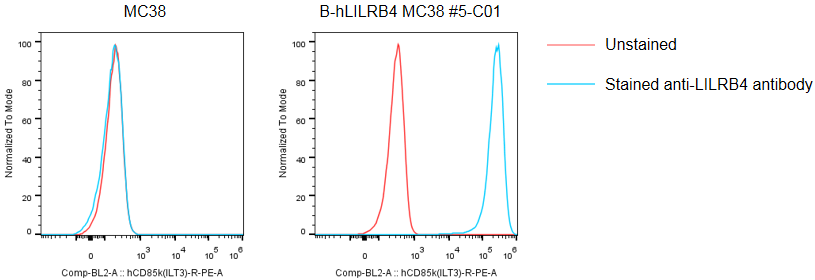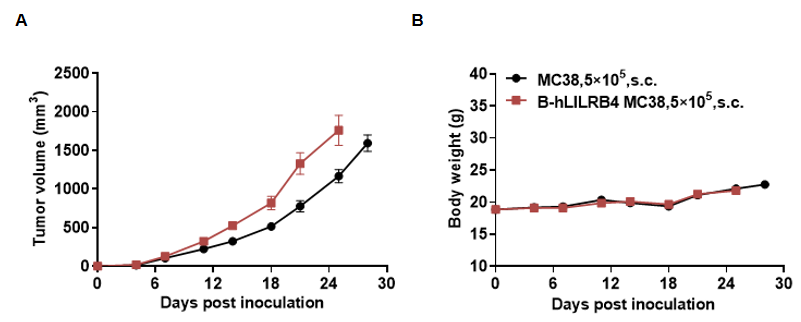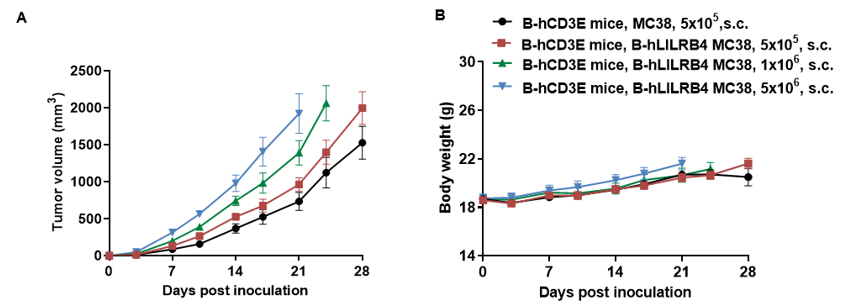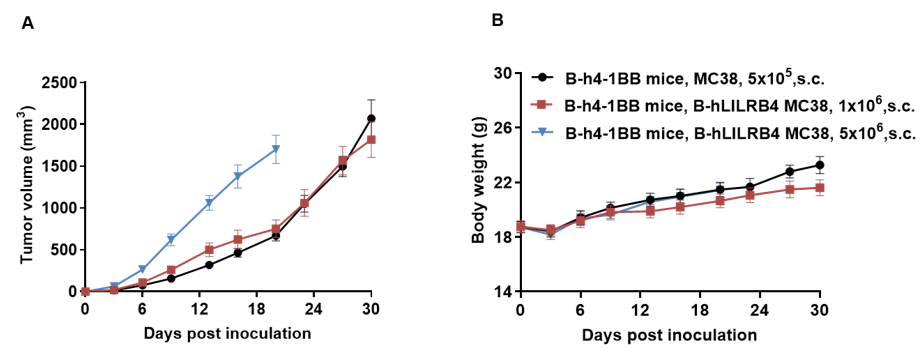|
Common name |
B-hLILRB4 MC38 | Catalog number | 310815 |
| Aliases | ILT3, LIR5, CD85K, ILT-3, LIR-5 | Disease | Colon carcinoma |
|
Organism |
Mouse |
Strain | C57BL/6 |
| Tissue types | Colon | Tissue | Colon |
Description
B-hLILRB4 MC38 cells have the capability to establish tumors in vivo and can be used for efficacy studies.
Targeting strategy

Tumor growth curve & Body weight changes

Subcutaneous homograft tumor growth of B-hLILRB4 MC38 cells. B-hLILRB4 MC38 cells (5x105) and wild-type MC38 cells (5x105) were subcutaneously implanted into C57BL/6N mice (female, 7-week-old, n=5). Tumor volume and body weight were measured twice a week. (A) Average tumor volume ± SEM. (B) Body weight (Mean± SEM). Volume was expressed in mm3 using the formula: V=0.5×long diameter × short diameter2. As shown in panel A, B-hLILRB4 MC38 cells were able to establish tumors in vivo and can be used for efficacy studies.

Tumor growth curve & Body weight changes

Subcutaneous homograft tumor growth of B-hLILRB4 MC38 cells. B-hLILRB4 MC38 cells and wild-type MC38 cells were subcutaneously implanted into B-h4-1BB mice (female, 6-week-old, n=6). Tumor volume and body weight were measured twice a week. (A) Average tumor volume. (B) Body weight. Volume was expressed in mm3 using the formula: V=0.5 X long diameter X short diameter2. As shown in panel A, B-hLILRB4 MC38 cells were able to establish tumors in vivo and can be used for efficacy studies. Values are expressed as mean ± SEM.








